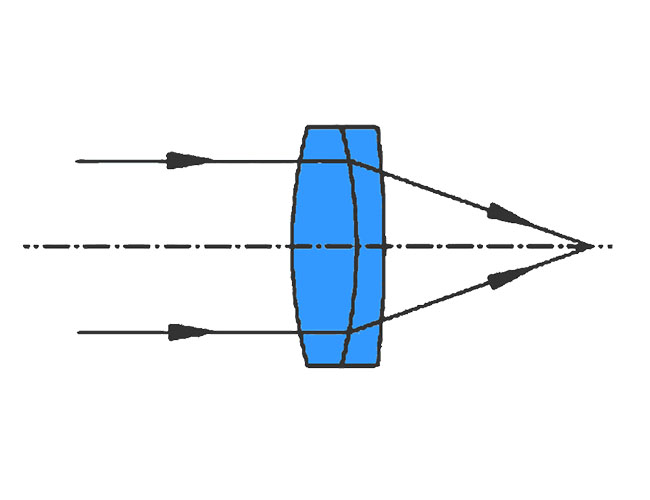ISO9001 Certified Professional Manufacturer & Supplier of Optics
+86-0431-87911611 admin@ytoptics.com
Contact us
-
 Email: admin@ytoptics.com
Email: admin@ytoptics.com
-
 Tel:86-0431-87911611
Tel:86-0431-87911611
-
 Add: 2# Automotive Innovation
Add: 2# Automotive Innovation
Jilin Province, China
Home > Products > Lenses > Doublet Lenses

N-BK7 / N-SF5 Achromatic Lenses
N-BK7(H-K9L) nd:1.516800 vd:64.20 ρ(g/cm³):2.52 N-SF5(H-ZF2) nd:1.672700 vd:32.17 ρ(g/cm³):2.90
Share this:
| Relative Partial Dispersions | |||||||
| N-BK7(H-K9L) | N-SF5(H-ZF2) | ||||||
| Ps,t | 0.3071 | P's,t | 0.3049 | Ps,t | 0.2246 | P's,t | 0.2212 |
|
PC,s |
0.5588 |
P'C',s |
0.6038 |
PC,s |
0.4793 |
P'C',s |
0.5169 |
| Pd,C | 0.3073 | P'd,C' | 0.2562 |
Pd,C |
0.2909 |
P'd,C' |
0.2417 |
| Pe,d | 0.2386 |
P'e,d |
0.2370 |
Pe,d |
0.2363 |
P'e,d |
0.2327 |
| Pg,F | 0.5359 |
P'g,F' |
0.4761 |
Pg,F |
0.5982 |
P'g,F' |
0.5293 |
| Pi,h | 0.7499 |
P'i,h |
0.7447 |
Pi,h |
0.9976 |
P'i,h |
0.9826 |
| Abnormal Dispersions | |||||||
| N-BK7(H-K9L) | N-SF5(H-ZF2) | ||||||
| △PC,t | 0.0171 | △PC,s | 0.0052 | △PC,t | 0.0061 | △PC,s | 0.0015 |
| △PF,e | -0.0006 | △Pg,F | -0.0005 | △PF,e | 0.0008 | △Pg,F | 0.0073 |
What is the application of Achromatic Lenses?
1. Microscopes: a typical application of a good quality microscope objective is an achromatic lens, which provides a clear and no chromatic aberration image, which is essential for observing and studying the microscopic world.
2. Photographic lenses: in the field of photography, achromatic lenses are used to make high-performance photographic lenses. These lenses are capable of capturing photographs with accurate colour reproduction and rich details to meet the needs of professional photographers and photography enthusiasts.
3. Telescopes: in the field of astronomy and viewing, achromatic lenses are used to make objective lenses for telescopes. These lenses provide a clear and no chromatic aberration image of astronomical observations and help observers to capture details of distant stars.
How to choose materials for achromatic lenses?
The commonly used materials are composed of (high dispersion) flint glass and (low dispersion) crown glass.
Highly Recommended Optical Lenses from Yutai Optics:
UV Fused Silica Lenses
Positive Meniscus Lenses
Optical BK7 Cylindrical Lens
N-BASF64 / N-BK7 / N-BASF64 Triplet Lenses

TALK TO US 86-0431-87911611
86-0431-87911611
Call us now!
 86-0431-87911611
86-0431-87911611Call us now!
ONLINE CHAT
 2433808388
2433808388

